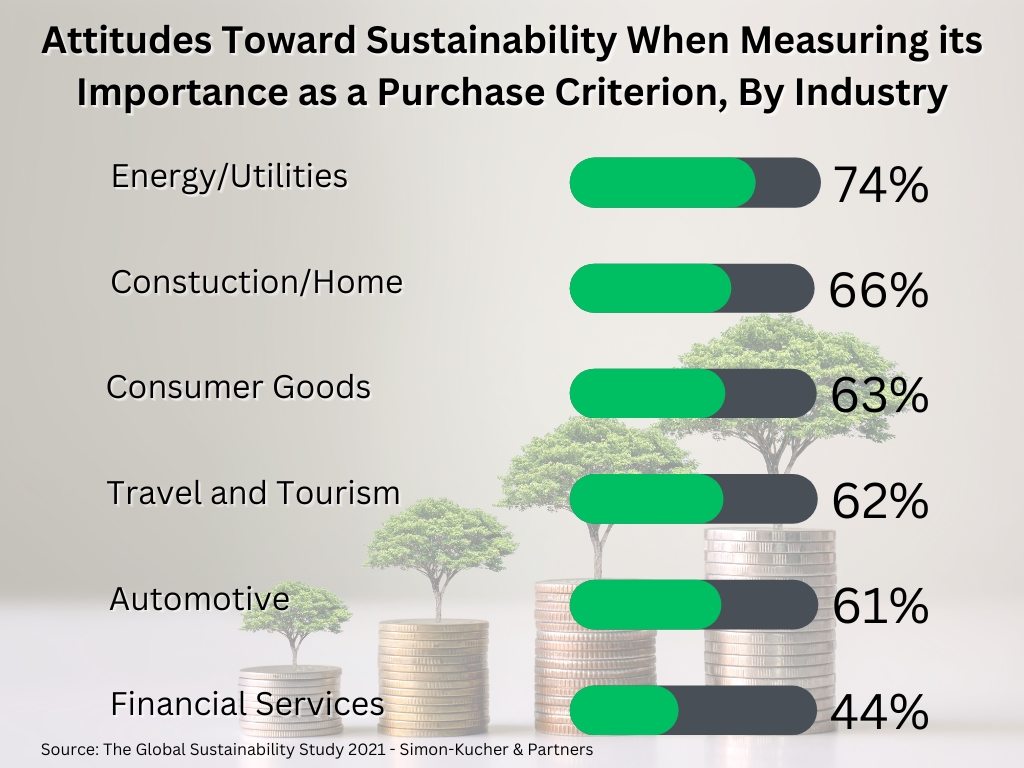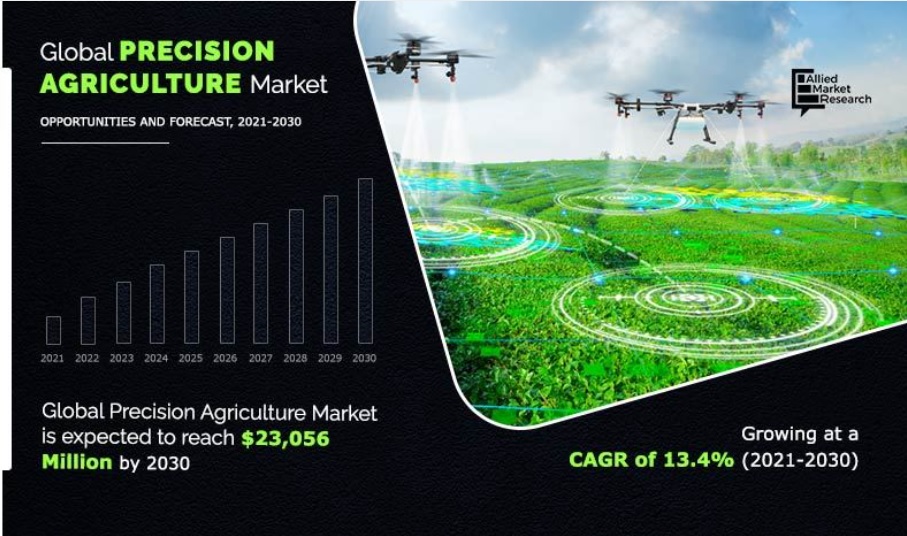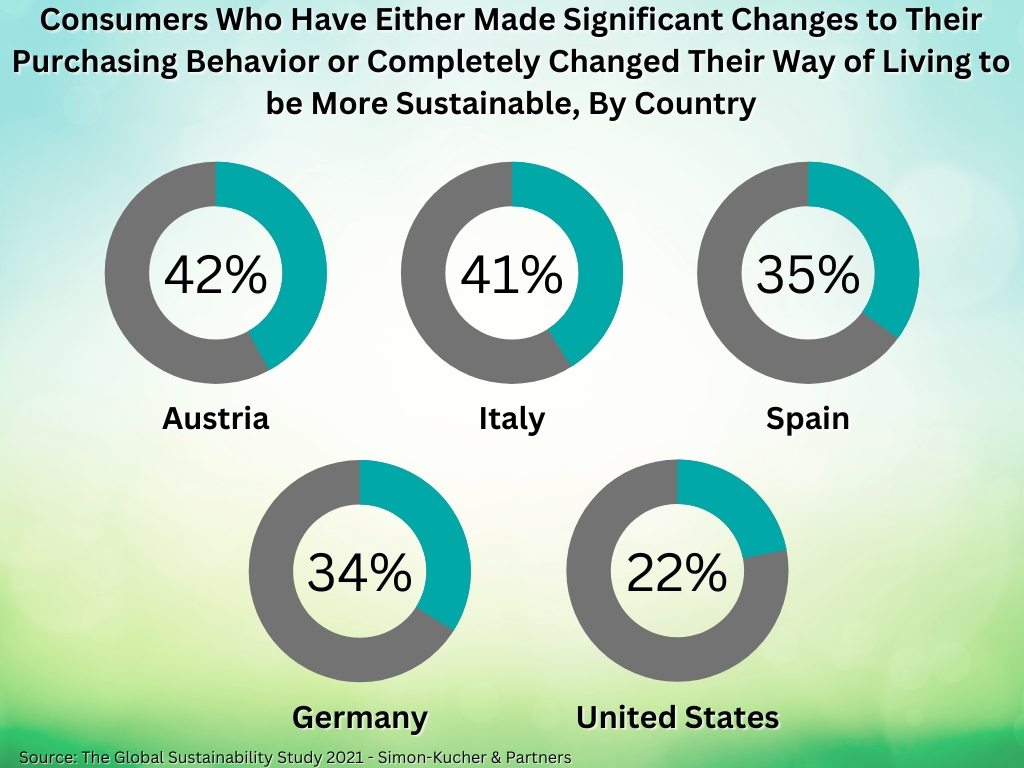From corn to pigs, growers and producers are leveraging technology to maximize output.
The amount of land available for growing and producing food is not increasing, but global population is. The need to do more with the same number of resources—or in some cases even fewer resources—is a key pain point in modern agriculture, as is dealing with the effects of climate change. One way the players in the agricultural and food value chains are not helping themselves in this regard is by wasting energy at just about every link in the chain—and this carbon output then exacerbates the climate problem.
There is certainly a lot of energy expenditure embedded in the production, transportation, distribution, and storage of food. Technologies can reduce this energy expenditure, leading to more sustainable and efficient systems for the whole supply chain—from farm to fork. Data-driven technologies can also improve growers’ and producers’ bottomline, it can provide the supply chain transparency today’s consumers want, and it can reduce food waste while boosting resource management.
The Problem with the Status Quo
Edward Carr, professor and director of IDCE (Intl. Development, Community, and Environment) at Clark University, works mostly with smallholder agrarian systems in the Global South. “There are a range of challenges for those producers, but several loom large,” he says. “The first is the limited availability of actionable weather and climate information that might help inform farm decisions like when to plant. Such information would be hugely helpful, particularly in farming systems where farmers account for such uncertainty with very inefficient hedging. A second huge challenge is getting produce and animals from the farm to the market. The rate of spoilage for vegetables in these systems is staggering—as much as 40% of production is lost—and much of that is because it takes a long time to get things from the farm to market, and those supply chains often lack reliable refrigeration. Similarly, storage is a big challenge, mostly enabled by drying because of the limited availability of refrigeration and other forms of cold storage.”
Looming over all of this is climate change. “We can see variability in the amounts and timing of precipitation, as well as the maximum daily temperatures in growing seasons increasing in parts of sub-Saharan Africa,” Carr explains. “This variability is a product of an unstable and changing climate system. This uncertainty challenges production and exacerbates the storage and transportation issues they already face.”
While most producers in the U.S. have access to weather and climate information and to systems that include cold storage, that doesn’t mean there isn’t also a significant amount of food waste. In fact, the USDA (U.S. Dept. of Agriculture) estimates food waste is between 30 and 40% of the food supply in the U.S. The USDA says loss happens at every stage of the supply chain, from spoilage during transportation to over-ordering at the retail level.

But to understand the challenges facing the food system as a whole, it’s best to begin at the beginning. Alireza Pourreza, assistant professor and director of the Digital Agriculture Lab at UC Davis and founder of kobin.com, says from a food production standpoint, there are several problems growers and producers in the U.S. face. “One major problem is soil degradation,” Pourreza says. “Due to intensive farming practices, soil fertility has decreased in many areas, leading to reduced crop yields and decreased soil health. Another problem is water scarcity. With water becoming increasingly scarce in many parts of California, irrigation practices need to be improved to reduce water waste and increase water-use efficiency. Overuse of pesticides can lead to environmental pollution and harm to beneficial insects. (And) changing climate patterns are leading to increased occurrences of extreme weather events, such as droughts, floods, and heatwaves, which can negatively impact crop yields.”
Agriculture is also a significant consumer of energy, with most of this consumption coming from non-renewable sources. “This dependence on non-renewable energy sources contributes to greenhouse gas emissions, which contribute to climate change,” Pourreza adds. “These problems call for the adoption of more sustainable practices that can help minimize waste, reduce energy use, and increase crop yields, while preserving soil health and reducing the environmental impact of agricultural practices.”
Crop production systems are closely linked with energy use, with energy being a critical input in most agricultural operations. “Irrigation is a crucial component of crop production, and it requires energy to pump water from underground or surface sources. This energy can come from electric pumps, diesel generators, or other sources,” Pourreza explains. “Field operations such as plowing, tilling, planting, and harvesting require energy from tractors, cultivators, and other machinery. Most of this machinery runs on fossil fuels such as diesel, gasoline, or propane. The production of synthetic fertilizers, which are commonly used in agriculture, requires a significant amount of energy. The production process involves the conversion of natural gas into nitrogen compounds, which are then processed into fertilizer. The production of pesticides also requires a considerable amount of energy. The manufacturing process involves the use of various chemicals, which are energy-intensive to produce. After crops are harvested, they need to be processed, packaged, and transported to market. This process also requires energy from machines, trucks, and other equipment.”
Bruno Basso, professor in the Dept. of Earth and Environmental Sciences and W.K. Kellogg Biological Station at Michigan State University, points out when it comes to energy use, certain crops are particularly bad offenders, and the status quo needs to change to make food systems more sustainable. “Corn production requires significant amounts of energy from fossil fuels, such as gasoline and diesel, to power tractors, irrigation pumps, and other machinery used in planting, harvesting, and transporting the crop,” Basso explains. “Corn is a primary feedstock to produce ethanol, a biofuel used in transportation. Corn production relies heavily on nitrogen fertilizer, which have a high energy carbon footprint. The production and transportation of nitrogen fertilizer contribute to energy use and carbon emissions. Corn is often irrigated, which requires energy to pump water from wells or other water sources. The drying equipment requires energy, often from natural gas or propane, to power the drying equipment.”
Basso says reducing energy use in corn production systems will require promoting more sustainable farming practices, such as reducing tillage and using cover crops. He also points to using precision farming technologies to optimize fertilizer and water use. In fact, these types of smart-agriculture technologies can and are playing a critical role in facilitating more sustainable food production.

Maximum Output, Minimum Input
Joshua Peschel, assistant professor and Black & Veatch Faculty Fellow in the Dept. of Agricultural and Biosystems Engineering at Iowa State University, says sick livestock like pigs can result in unexpected energy costs, such as those from heating, lighting, pumping water for animal consumption, and facility cleaning—all necessary for caring for sick animals. Peschel points out that earlier, more consistent identification of sick animals through use of new technologies would lessen costs, waste, and resource use, including antibiotics. It would simultaneously increase animal welfare and positively affect pork producer profitability.
“Current PLF (precision livestock farming) tools can enable better management in animal production systems, but they are limited to mostly proxy measurements—e.g., environmental conditions, water and feed measurements, etc.,” Peschel explains. “We need new automated visual PLF tools, preferably in a mobile form factor, because they are not invasive and instead rely on low-cost individual animal visual sensing and activity recognition characteristics in high-fidelity, continuous situations.”
In agriculture, data-driven technologies like GPS mapping, soil sensors, drones, crop models, and AI (artificial intelligence) can optimize crop inputs, such as fertilizer and water, and reduce waste. The use of renewable energy sources, such as solar, wind, and biogas, can be used to power farm operations, reducing reliance on fossil fuels. Both Peschel and Basso say the industry needs more R&D (research and development) to build up new technologies and practices that can improve the efficiency and sustainability of various food production systems.
Simerjeet Virk, assistant professor and extension precision ag specialist in the Crop and Soil Sciences Dept. at the University of Georgia, says technology is the only way producers can produce more with less. “Technology is helping us be more efficient with our crop inputs, whether it’s fertilizer or pesticides or water,” Virk says. For systems like irrigation, too, Virk says precision ag is allowing farmers to dial in on what fields need on a foot-by-foot basis.

“Precision ag is based on the idea that a whole field doesn’t need the same amount of anything,” he explains. “So for irrigation, we have moisture sensors that you can place in different parts of the field and they’re actively measuring soil moisture, and all that data is collected and sent back via cloud to a remote computer. A grower or farm manager or someone can access that (data) and they can make a decision on ‘do I need to irrigate today or not?’”
Virk describes how similar solutions help growers make decisions about spraying pesticides. “We have a new technology from John Deere right now, a sprayer that has cameras mounted on the front that are actively sensing in realtime where the weeds are, and then the nozzles on the sprayer are coming on and off as needed to spray those weeds very precisely.”
The solution, called See & Spray Ultimate, leverages AI to identify weeds from other plants, allowing growers to spray only the weeds instead of spraying an entire field. Thanks to this technology, growers can dial in on the resource needs of every inch of a field, dramatically reducing the inputs needed to cultivate a crop.
How to Get to Point B
If point A is the status quo in U.S. food production and point B is where the industry needs to go to reduce inputs and achieve greater sustainability, what needs to happen to move from point A to point B? While technology is providing many solutions to problems within the food value chain, it also brings its own challenges.
Virk says there is a whole lot of data floating around in agriculture and the food value chain, but many of the players involved don’t yet know how to leverage that data. “All the sensors (are) generating a lot of data,” he says, “and right now we’re collecting a lot of data, but we’re not maximizing the use of that data to make more informed decisions, which would help us be more profitable, productive, and sustainable in the future.”
5 Ways Data Is Making the Food Industry More Sustainable
Yu Jiang, assistant professor in the School of Integrative Plant Science Horticulture Section at Cornell AgriTech, shares five ways data is improving systems within the food industry.
- Advanced data-driven methodologies are being rigorously developed for high-throughput plant phenotyping to bolster genetics research and breeding programs, ultimately facilitating the delivery of new cultivars and varieties with superior yield, quality, and stress resistance. These innovations contribute to the great start of sustainable and resilient agrifood systems.
- Data integration is playing a pivotal role in the management of pests (including diseases, weeds, and other issues) and water resources (such as irrigation), reducing dependence on natural resources and synthetic chemicals while maintaining food yield and quality for human consumption.
- By merging AI and control theories, big data is being harnessed to regulate agricultural infrastructure (e.g., greenhouses, plant factories, and irrigation facilities) with remarkable precision. This approach minimizes overall energy consumption while enhancing the productivity of year-round food production systems.
- Data-driven strategies are employed to optimize transportation logistics, ensuring the efficient delivery of fresh produce from farm to table with a significantly reduced carbon footprint, while preserving the freshness and quality for consumers.
- The development of data-sharing systems is facilitating the coordination among food waste producers, processors, and downstream users, enabling the efficient recycling of waste into valuable resources. This approach promotes a circular bioeconomy with potential environmental benefits.
Ines Kapphan, vice president of data and cloud solutions, Climate and Digital Farming, Bayer’s Crop Science Division, says despite incredible technological and digital advancements throughout the last decade, there is no common vocabulary for agricultural data. For example, Kapphan says farmers have been using precision technologies for decades and many would like to connect that data downstream, but a lack of interoperability makes it very difficult for them to do so.
“In today’s world, the difficulty of accessing, developing, and scaling digital solutions that leverage data and meaningfully serve farmers and those connected to the farm continue to be the lack of interoperability between digital tools within the current ecosystem,” adds Kapphan. “By enabling data interoperability throughout the food and agriculture value chain, we’ll be able to make progress in offering improved ways of transporting, storing, and processing food and connecting the consumer back to the farm where all those consumption goods originated.”
Startup costs are another hurdle. Kapphan says for companies that set out to innovate in agriculture, the cost to develop and build digital solutions from scratch are expensive and complex. “Existing digital systems that attempt to connect parts of the value chain today are labor-intensive, often requiring manual data handling that is subject to human error,” she says. “Therefore, supply chains remain opaque, with limited data and insights being shared across value chains.”
Kapphan says she once heard farming referred to as “outdoor manufacturing.” Like any manufacturer, she says, farmers are trying to maximize their outputs while optimizing their inputs. Better interoperability between digital tools would not only open the door to better efficiencies within processes but also would allow for greater transparency within the agriculture and food value chain as a whole.
Pourreza from UC Davis says beyond precision agriculture, which involves the use of sensors, drones, GPS, and other technologies to collect data on crop health, soil moisture, and other parameters and uses this information to optimize inputs such as water, fertilizer, and pesticides, there are key technologies such as food tracking systems, smart packaging, and food processing equipment that reduce food waste by improving supply chain management, extending shelf life, and reducing spoilage. Beyond tech adoption, Pourreza says governments and policymakers will play an important role in moving the industry to the next level.

“Governments can provide funding for research and development of smart agriculture technologies, as well as for programs that promote the adoption of these technologies among farmers,” he says. “Governments can establish standards and regulations for the use of smart agriculture technologies, such as those related to data privacy and security, environmental protection, and food safety. […] Governments can provide education and training programs for farmers and other stakeholders on the benefits and best practices for using smart agriculture technologies. […] (Finally), governments can create market incentives, such as carbon credits or other forms of financial rewards for farmers who adopt smart agriculture technologies that promote sustainability and reduce waste.”
Links for Further Learning:
- Consumers willing to pay more for sustainability report
- Bayer Microsoft partnership
- Precision ag market research report
Want to tweet about this article? Use hashtags #IoT #sustainability #AI #5G #cloud #edge #digitaltransformation #machinelearning #infrastructure #climatechange #agriculture #farming #food #precisionagriculture #foodwaste #renewable #Bayer #sensors #supplychain #tracability #energy #resourcemanagement #JohnDeere


